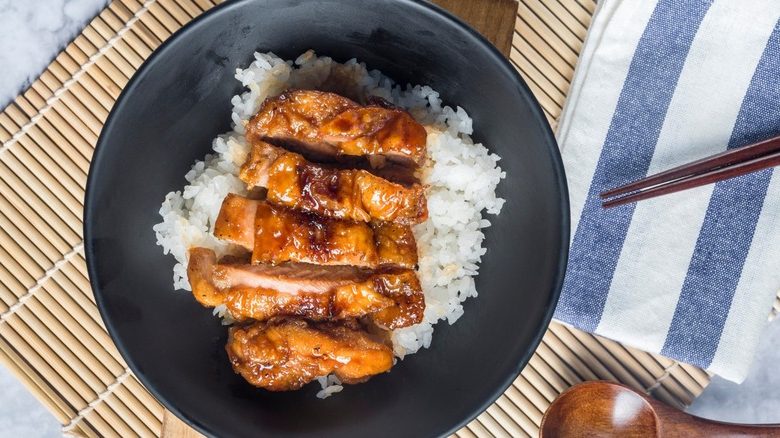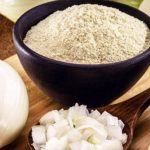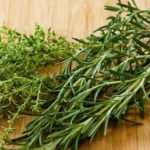Teriyaki vs Hibachi
Asian cuisines and foods are popular all over the world, these days there are hardly any country you go to that you won’t find some Asian foods being eaten. One of such popular are Asian foods originating from Japan, these foods took with them the Japanese way of cooking or cooking method. As a result, you cannot discuss Japanese foods without discussing their cooking methods. In fact, quite a lot of Japanese foods are identified by their cooking methods and these cooking methods are the Hibachi and Teriyaki.
In this Hibachi vs Teriyaki comparison article, I am going to explain what Hibachi is in comparison to what Teriyaki is as well as any similarities if any and ultimately the differences between Teriyaki and Hibachi cooking methods.
What is Hibachi?
Hibachi refers to both a traditional Japanese heating device and a style of Japanese cuisine that is prepared on a flat-top grill or teppanyaki grill. As you can see, Hibachi is not just a cooking method, but also a heating method used to provide warmth in homes. These two forms of Hibachi would be explained below:
Forms of Hibachi
- Hibachi as a Heating Device: In traditional Japanese culture, a hibachi is a small, portable charcoal or wood-burning heater. Historically, it was used to provide warmth and to cook food in a household setting. Traditional hibachis were made of materials like ceramic, clay, or metal and were designed to hold and burn charcoal. Over time, the use of hibachis as a heating device has declined, and modern heating methods have taken their place.
- Hibachi as a Cuisine Style: In Western countries, “hibachi” is more commonly associated with a style of Japanese cuisine that involves cooking food on a flat-top grill, known as a teppanyaki grill. This style of dining gained popularity outside of Japan in the mid-20th century, often in Japanese-themed restaurants.
In a hibachi restaurant or teppanyaki grill, diners sit around a large, flat cooking surface where skilled chefs prepare the food right in front of them. The chefs showcase their culinary skills, entertaining guests with impressive knife tricks, tossing and flipping ingredients, and sometimes creating flaming displays during the cooking process.
Typical hibachi dishes include a variety of meats such as steak, chicken, shrimp, and vegetables, all cooked on the grill. The food is often seasoned with sauces and spices to enhance the flavor. Additionally, fried rice and noodles are common accompaniments cooked on the same grill.
Hibachi dining offers a unique and interactive experience, combining entertainment with delicious food preparation, making it a popular choice for special occasions or group gatherings.
What is Teriyaki?

Teriyaki is a Japanese cooking technique and sauce that involves grilling or broiling meat, seafood, or vegetables with a glaze of soy sauce, mirin, and sugar. The word teriyaki comes from the Japanese words teri, which means “luster” or “brilliance,” and yaki, which means “to grill or broil.” The glaze used in teriyaki cooking gives the food a shiny, caramelized appearance.
Teriyaki sauce is typically made with soy sauce, mirin, sugar, and sake. Mirin is a sweet Japanese rice wine that adds a depth of flavor to the sauce. Sake is an alcoholic beverage made from fermented rice that adds a touch of umami to the sauce. Other ingredients that may be added to teriyaki sauce include ginger, garlic, honey, and cornstarch.
Teriyaki sauce can be used as a marinade, basting sauce, or dipping sauce. It is a versatile ingredient that can be used to flavor a variety of dishes. Teriyaki chicken is a popular dish that is made with chicken that has been marinated in teriyaki sauce and then grilled or broiled. Other popular teriyaki dishes include teriyaki salmon, teriyaki tofu, and teriyaki vegetables.
Teriyaki is a popular dish in Japanese cuisine, but it has also become popular in other parts of the world. It is a delicious and versatile dish that can be enjoyed by people of all ages.
Some things to know about Teriyaki:
- The word teriyaki was first recorded in the 17th century.
- Teriyaki was originally used to cook fish, but it is now commonly used to cook a variety of meats and vegetables.
- Teriyaki sauce is a popular ingredient in Japanese cuisine, but it is also used in other cuisines, such as Korean, Chinese, and Thai cuisine.
- Teriyaki is a relatively healthy dish, as it is a good source of protein and low in fat.
Unlike the chicken in Teriyaki dishes, ta chien chicken dish is prepared quite differently, you might want to find out how.
Hibachi vs Teriyaki
From the above sections explaining each individual Japanese cooking methods, I hope you now have an idea what Hibachi is and what Teriyaki equally is. Most importantly, you can recognize one when you spot. The comparison between teriyaki and Hibachi can be summarized in the following few short paragraphs below.
Teriyaki, known for its mouthwatering sweet and savory glaze, involves marinating meats like chicken, beef, or salmon in a delectable sauce before grilling or broiling them to perfection. The result is a tantalizing caramelized exterior that harmonizes beautifully with tender and juicy meat. Teriyaki’s simplicity and versatility make it a favorite in both Japanese restaurants and home kitchens.
On the other hand, Hibachi brings the excitement of live cooking to the table. Skilled chefs showcase their culinary prowess by grilling an assortment of meats, seafood, and vegetables on a flat-top teppanyaki grill right before diners’ eyes. The interactive and entertaining experience, combined with the tantalizing aroma of sizzling ingredients, elevates dining to a sensory delight.
Teriyaki and Hibachi may seem distinct, but they often complement each other in Japanese cuisine. Some Hibachi restaurants offer Teriyaki-inspired dishes as part of their menu, combining the best of both worlds. While Teriyaki satisfies the desire for a delicious glaze, Hibachi fulfills the craving for an interactive and visually captivating dining experience.
Teriyaki vs Hibachi Comparison Table
There’s no better way to illustrate the difference between the two Japanese cooking methods than with the use of a comparison table. Below are the Hibachi vs Teriyaki differences in a table:
| Aspect | Teriyaki Cooking Method | Hibachi Cooking Method |
|---|---|---|
| Cooking Technique | Teriyaki is a cooking technique that involves marinating | Hibachi is a style of Japanese cuisine prepared on a flat-top grill or |
| meat in a sweet and savory sauce and then grilling or | teppanyaki grill, where the food is cooked on a flat surface in front of | |
| broiling it to create a caramelized exterior with a shiny | diners by a skilled chef. | |
| glaze. | ||
| Type of Cuisine | Teriyaki is a specific Japanese cooking method and a sauce | Hibachi is a style of Japanese cuisine, often found in teppanyaki |
| used in various dishes. | restaurants, featuring grilled meat, seafood, and vegetables. | |
| Heating Device | No specific heating device involved; traditional grills, | Hibachi as a heating device refers to a small, portable charcoal or |
| broilers, or stovetops can be used. | wood-burning heater, traditionally used for warmth and cooking in | |
| Japanese households (not commonly used in modern times). | ||
| Cooking Surface | Teriyaki cooking does not require a specific type of surface | Hibachi cooking is performed on a flat-top grill or teppanyaki grill, |
| and can be done on various cooking surfaces. | which provides a large, flat cooking area for the chef to prepare food. | |
| Cooking Style | Teriyaki focuses on marinating and grilling/broiling | Hibachi cooking involves skilled chefs cooking in front of diners, |
| meat or other ingredients. | showcasing knife tricks, tossing and flipping ingredients, and providing | |
| an entertaining dining experience. | ||
| Entertainment Value | While Teriyaki cooking can be enjoyable, it does not | Hibachi cooking offers entertainment value with chefs performing |
| typically involve a live cooking show. | culinary tricks and engaging diners during the cooking process. | |
| Menu Items | Teriyaki can be used to prepare various dishes like | Hibachi restaurants typically offer a range of meats (steak, chicken, |
| Teriyaki chicken, beef, or salmon. | shrimp), seafood, vegetables, and accompanying sides (fried rice, | |
| noodles). | ||
| Popular Occasions | Teriyaki dishes are commonly enjoyed at Japanese restaurants | Hibachi dining is popular for special occasions, celebrations, and group |
| or made at home for everyday meals. | gatherings, offering an interactive and entertaining dining experience. |
Improve your rice cooking skill by reading how to know your rice is done.
The above table provides mostly an overview of the main differences between Teriyaki and Hibachi cooking methods. You should have in mind that both methods are part of Japanese cuisine and can complement each other in various ways. They often complement each other actually.



